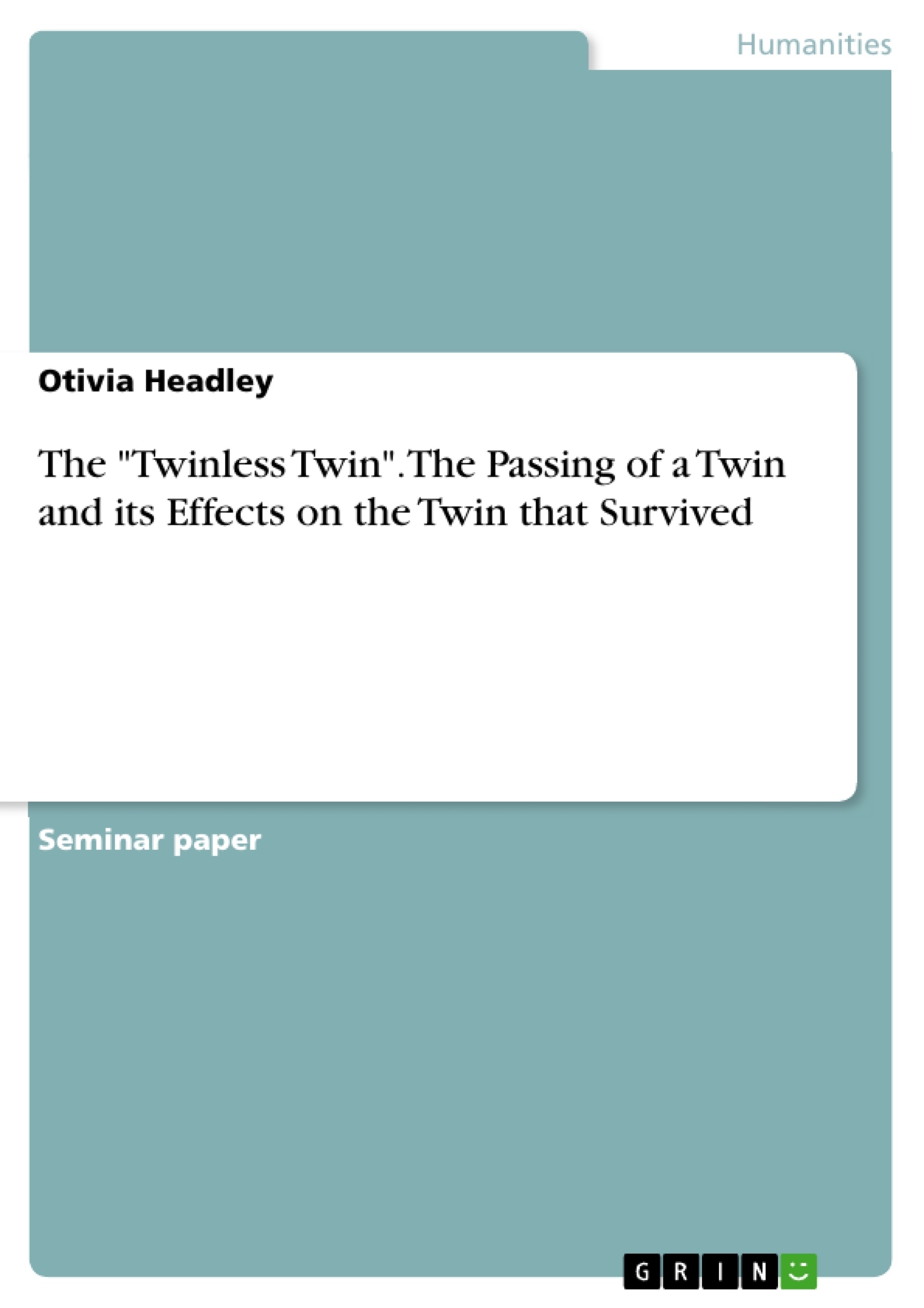Following the death of a spouse, sibling, friend or significant other, there are general ways that individuals usually grieve. This has been shown through countless amounts or research and articles.
Being able to understand the unique nature of twin loss will allow for counselors and social work practitioners to be able to lend their support and find ways to guide individuals that have lost their twin as well as guide families and parents through this time. This paper explores the symptomology of individuals at different developmental stages and the impact that bereavement has on their identity development. In addition this paper will examine the different grief levels and twin attachment styles along with western and non-western beliefs surrounding the life and death of twins in hopes to bring light to a forgotten population, ‘Twinless twins’.
Table of Contents
- Abstract
- Introduction
- My Story
- Review of Literature
- In-Utero
- Non-Western Belief
- Identical vs. Fraternal
- Twin Attachment Styles
- Levels of Grief:
- Physiological, External and Behavioral Symptoms
- Positive Symptomatology
- Family
- Special Occasions
- Conclusion
- Implications for Counseling/Social Work Practice
- Support
- References
Objectives and Key Themes
This paper aims to shed light on the unique grief experienced by individuals who have lost their twin, often referred to as "Twinless Twins." It explores the impact of such a loss on identity development and examines the different grief levels and twin attachment styles. The paper also investigates the influence of western and non-western beliefs surrounding twin life and death. It aims to provide a comprehensive understanding of this often-overlooked population and the challenges they face, with implications for counseling and social work practices.
- The unique grief and experiences of Twinless Twins.
- The impact of twin loss on identity development.
- Different grief levels and twin attachment styles.
- The influence of Western and non-Western beliefs surrounding twin life and death.
- Implications for counseling and social work practices supporting Twinless Twins.
Chapter Summaries
The paper begins by outlining the author's personal experience with the loss of her twin sister, highlighting the emotional complexities of being a "Twinless Twin." The "Review of Literature" section delves into various aspects of twin loss, covering topics like the in-utero environment, non-western beliefs about twins, and the distinct characteristics of identical versus fraternal twins. It further explores the unique nature of twin attachment styles and the different levels of grief, including physiological, external, and behavioral symptoms. The paper concludes with a discussion of the implications for counseling and social work practice, emphasizing the need for support and understanding for individuals navigating the loss of a twin.
Keywords
The primary focus of this paper revolves around the concepts of "Twinless Twins," "Twinship," and "twin loss." It investigates the specific challenges and complexities associated with navigating the death of a twin, exploring various themes such as grief, identity development, attachment styles, and the impact of cultural beliefs. The paper's key terms encompass the unique characteristics of this population, including "singleton," "co-twin," and "SIDS," providing a comprehensive understanding of the diverse aspects of this often-overlooked topic.
- Quote paper
- Otivia Headley (Author), 2014, The "Twinless Twin". The Passing of a Twin and its Effects on the Twin that Survived, Munich, GRIN Verlag, https://www.grin.com/document/286803




